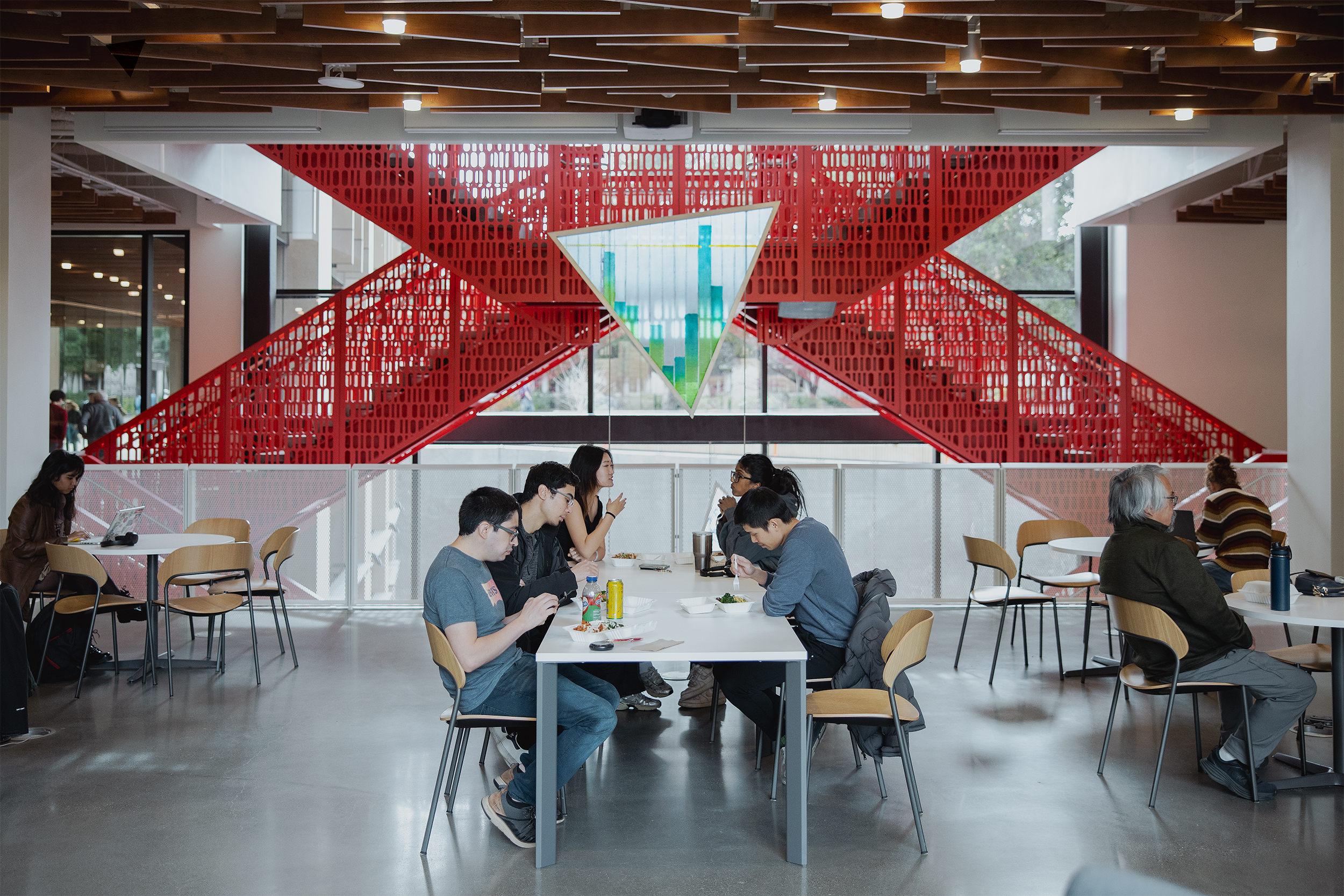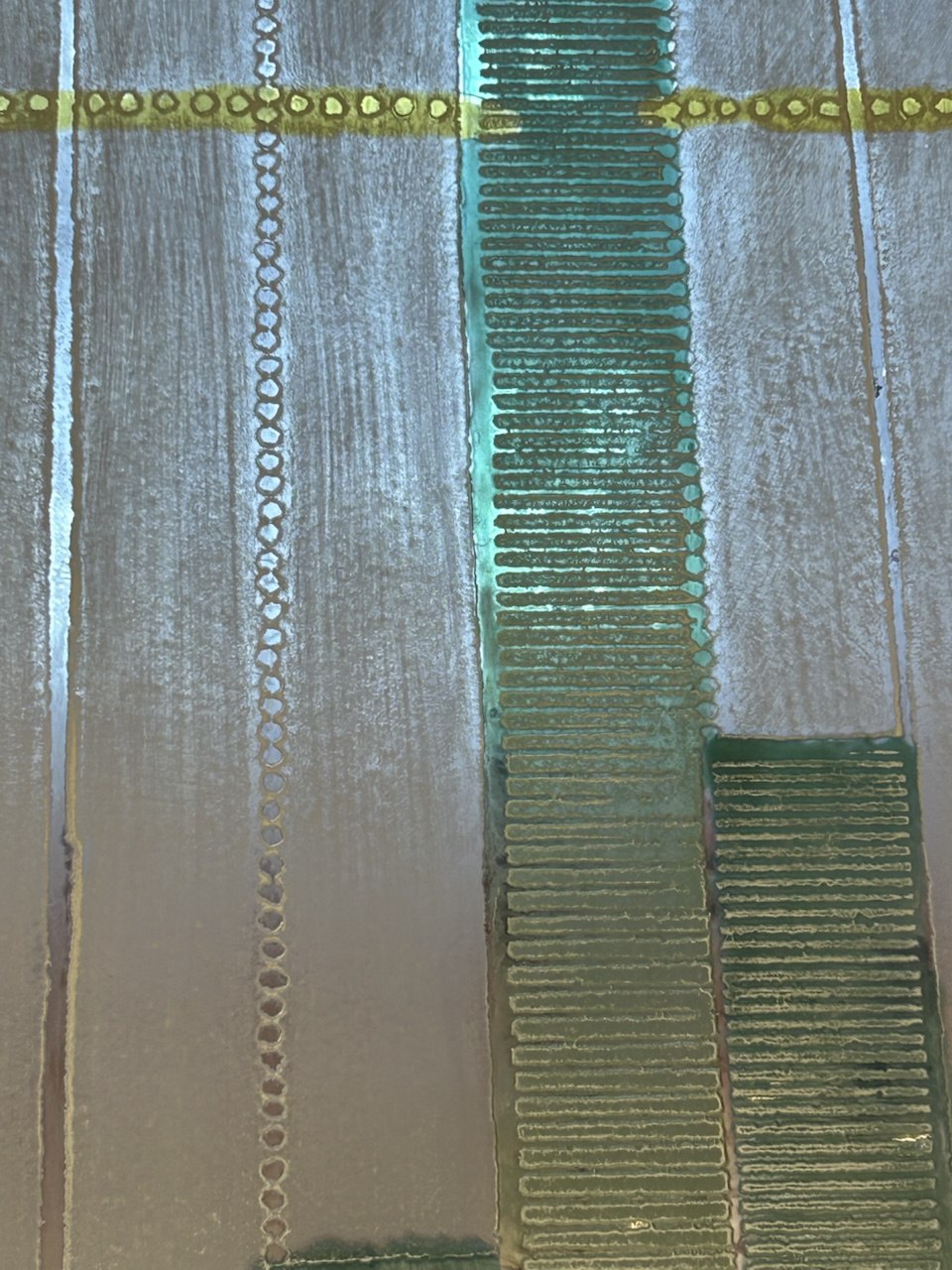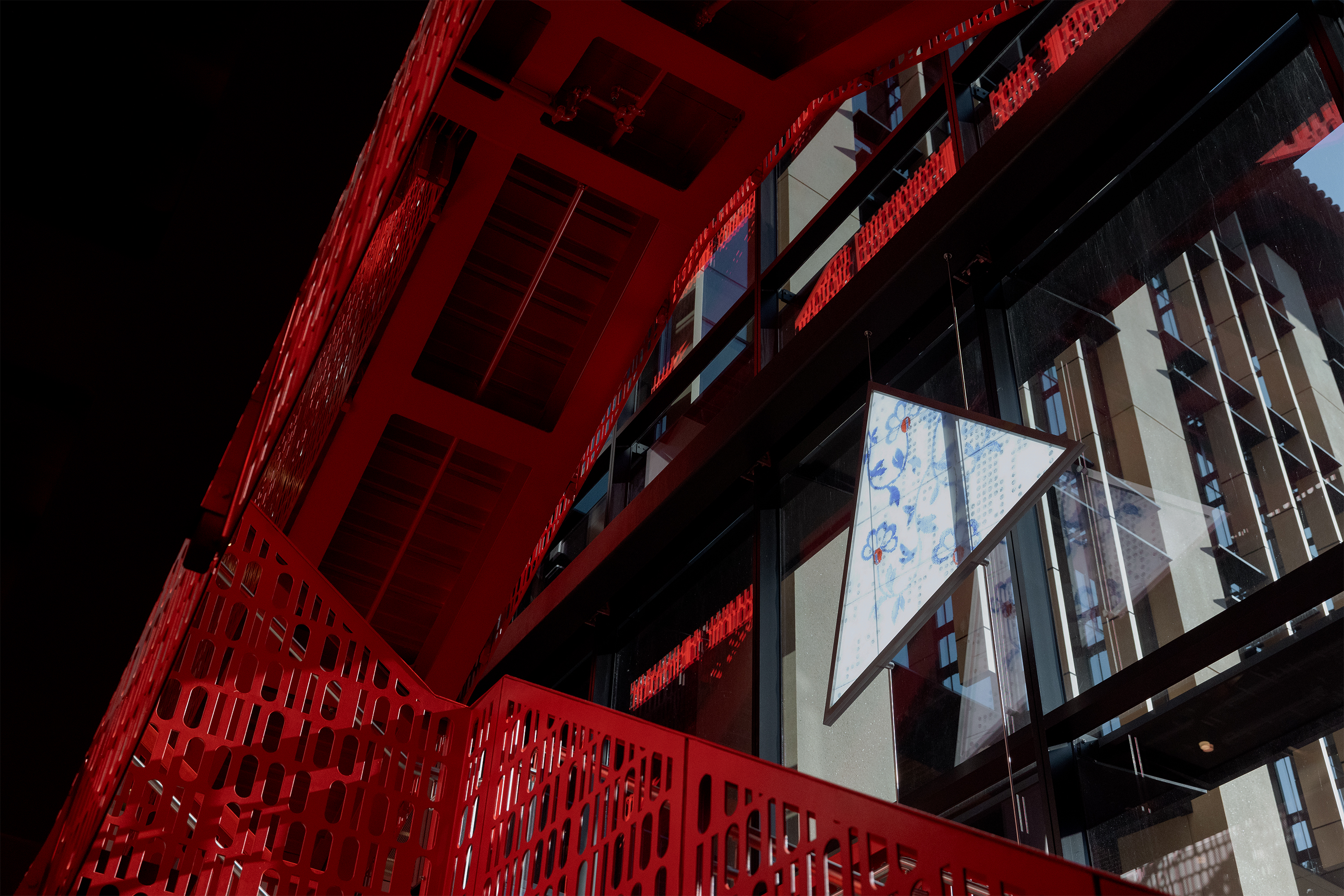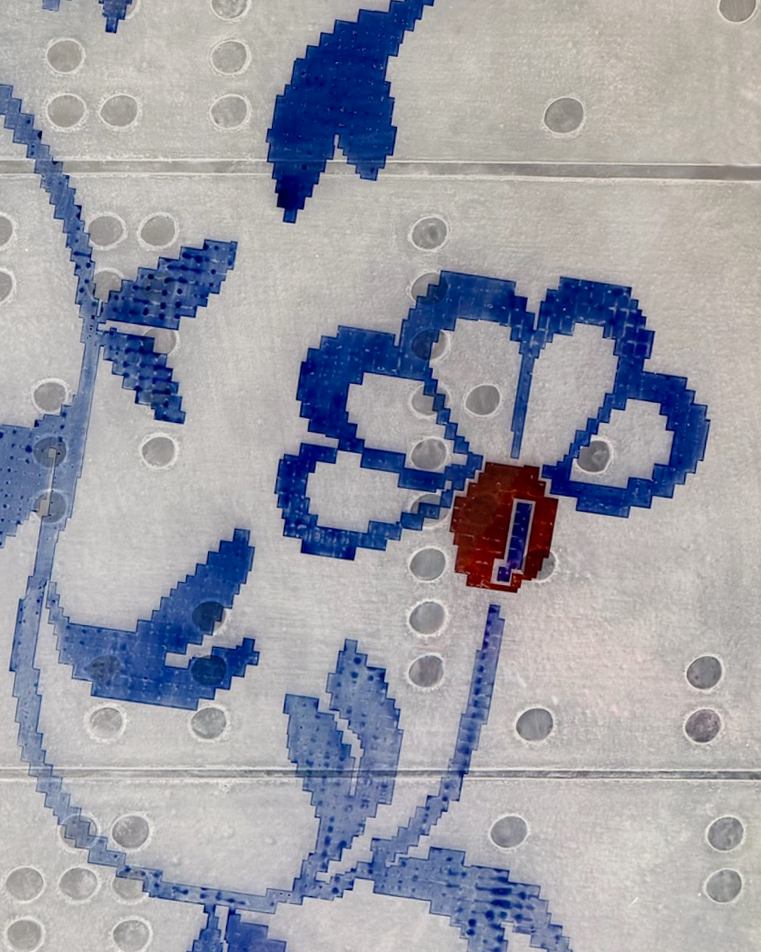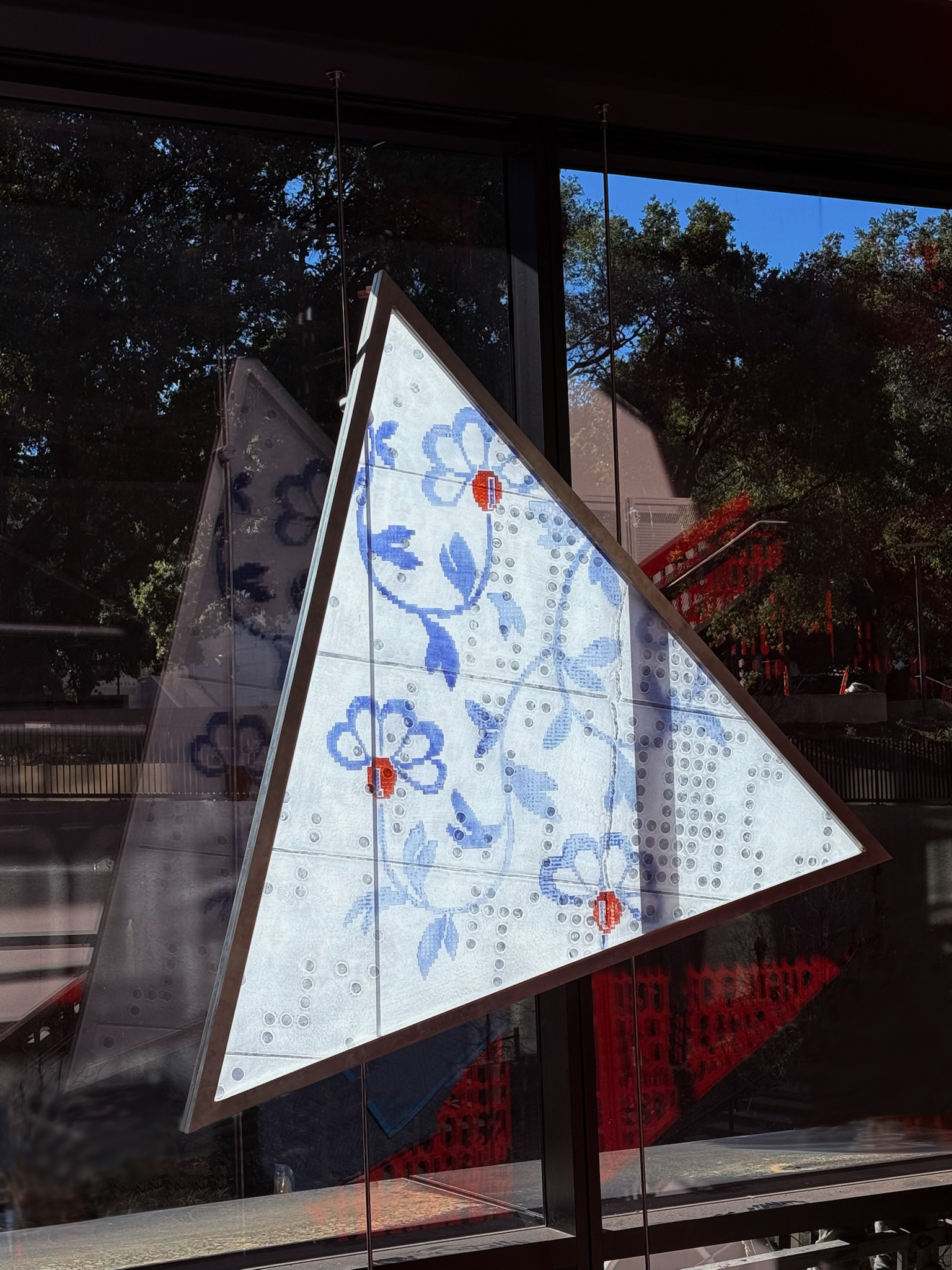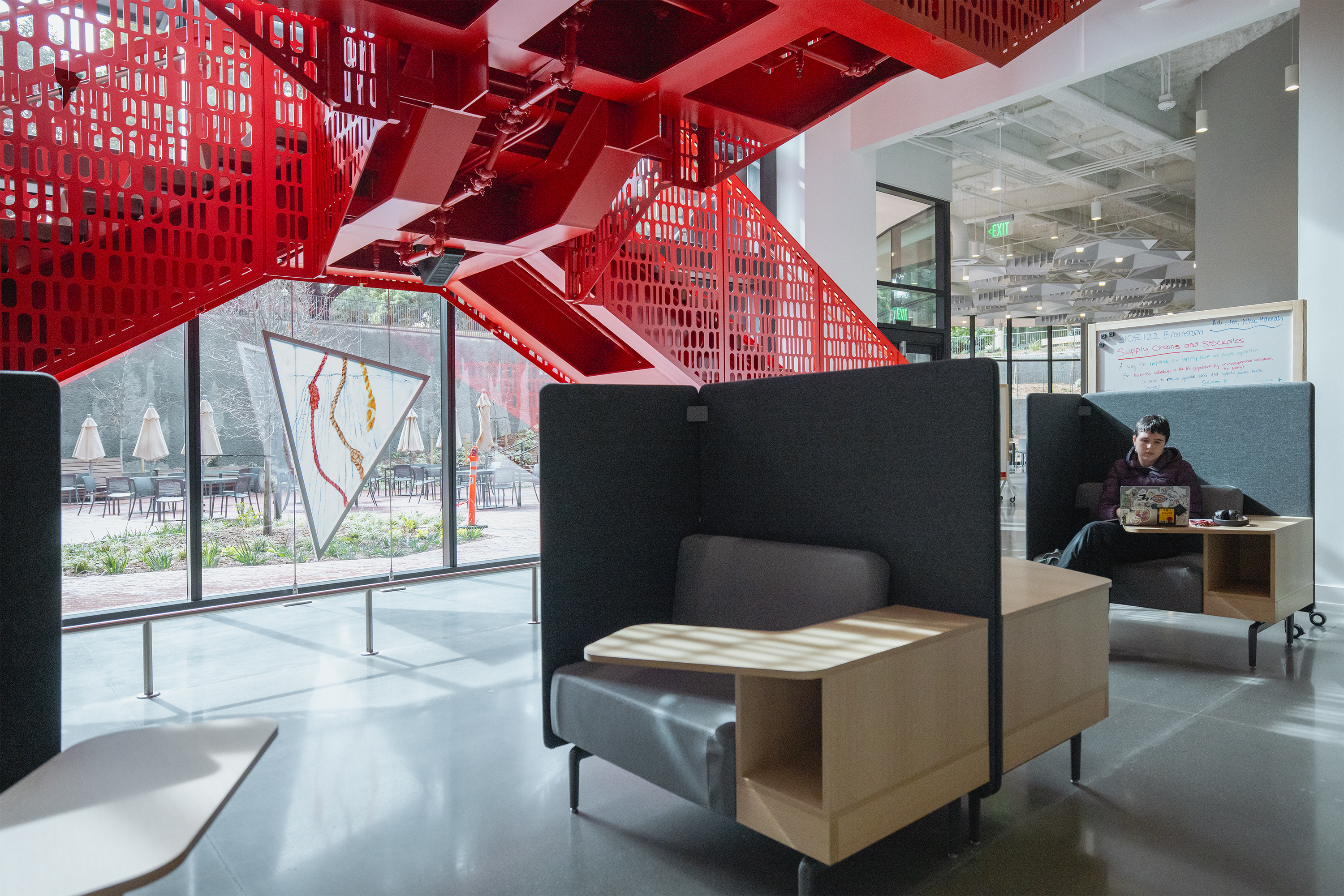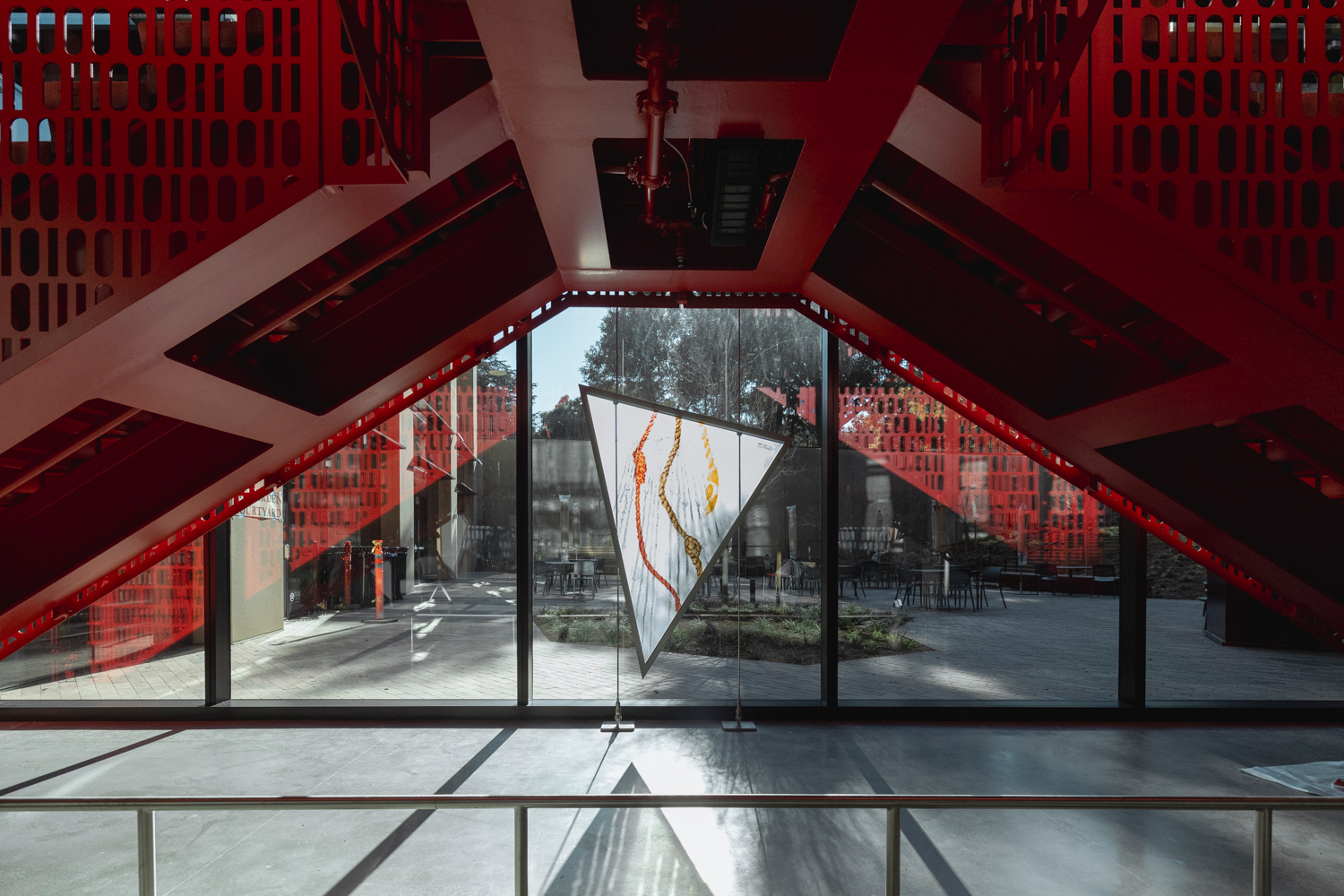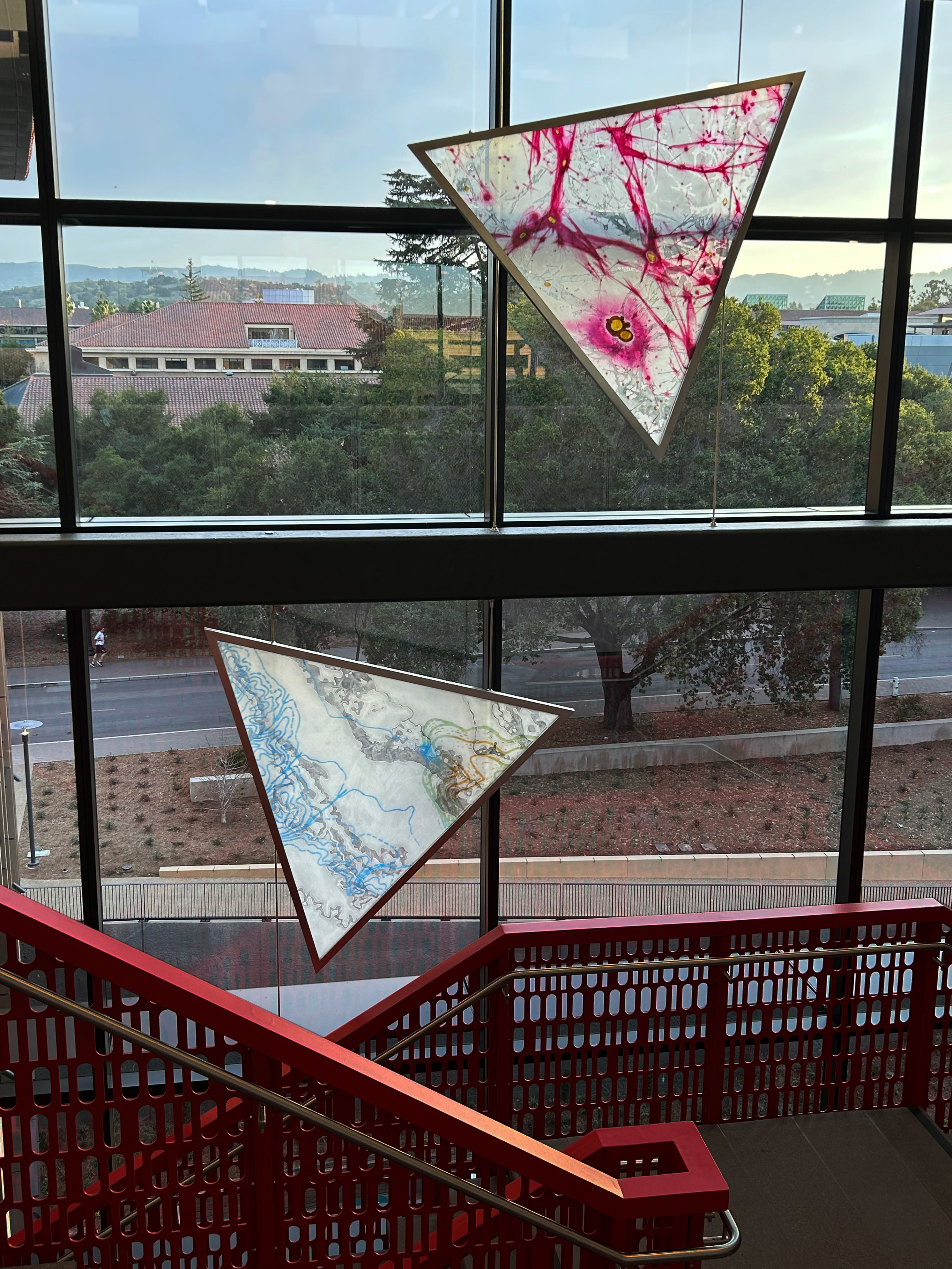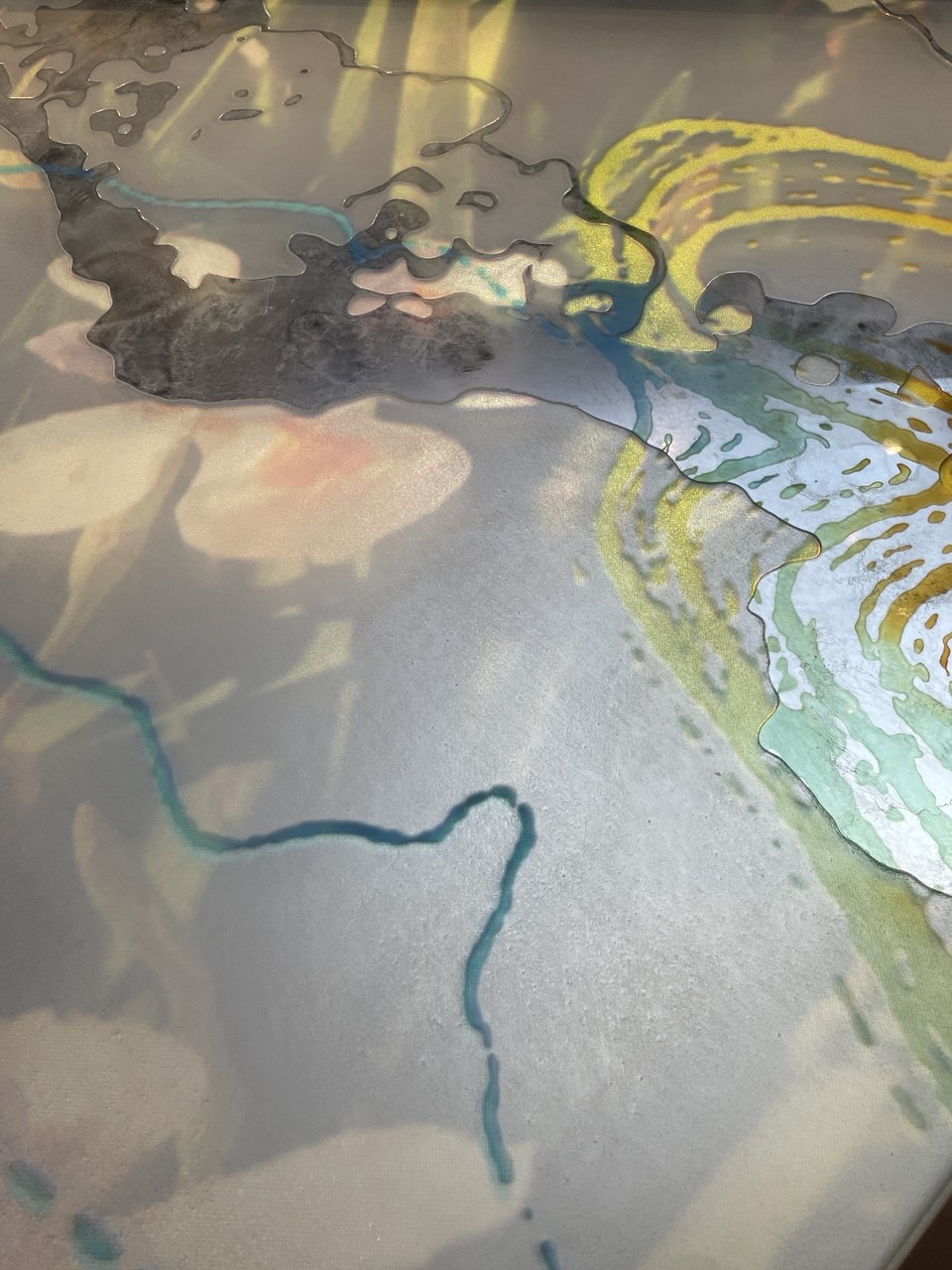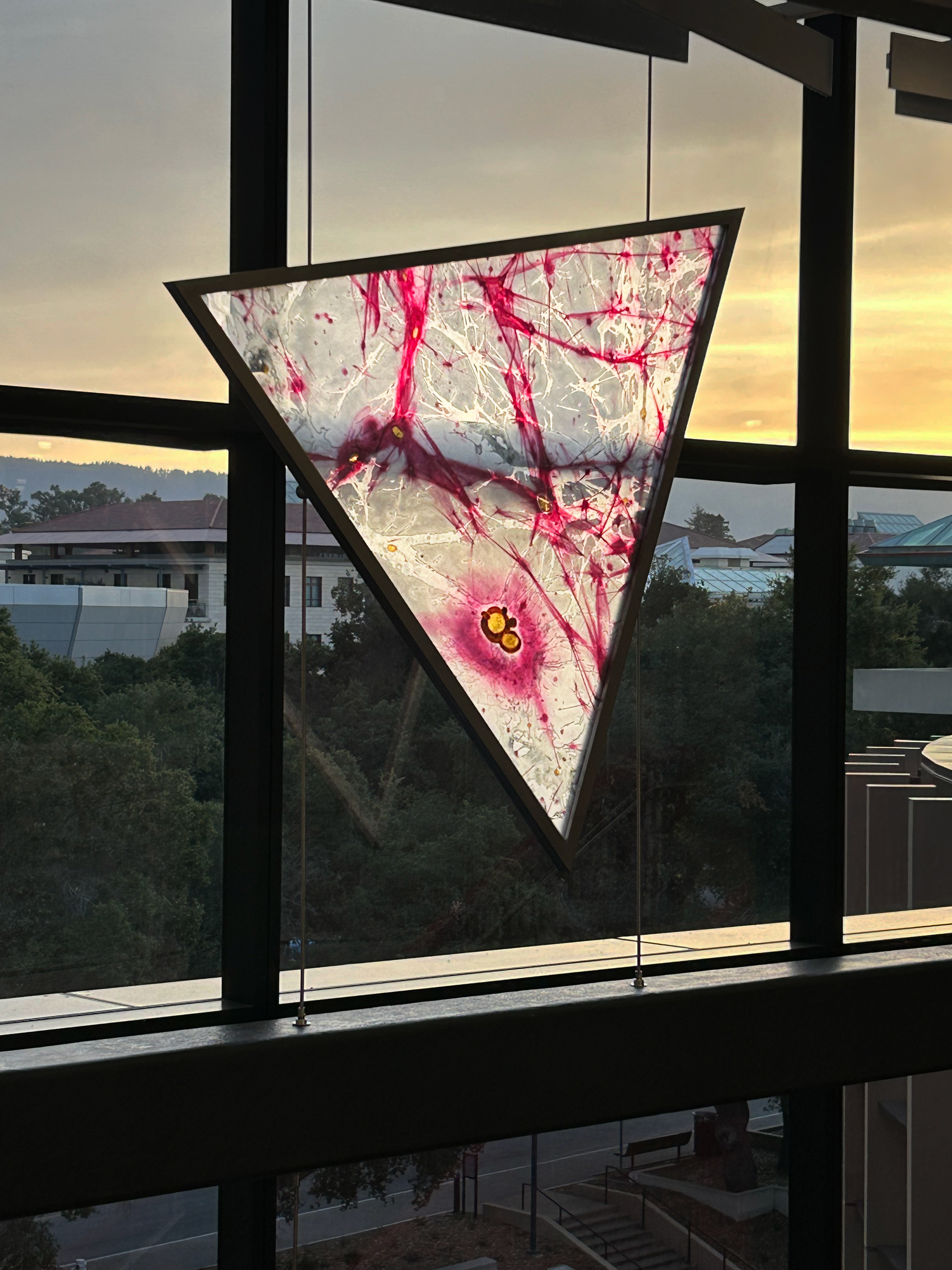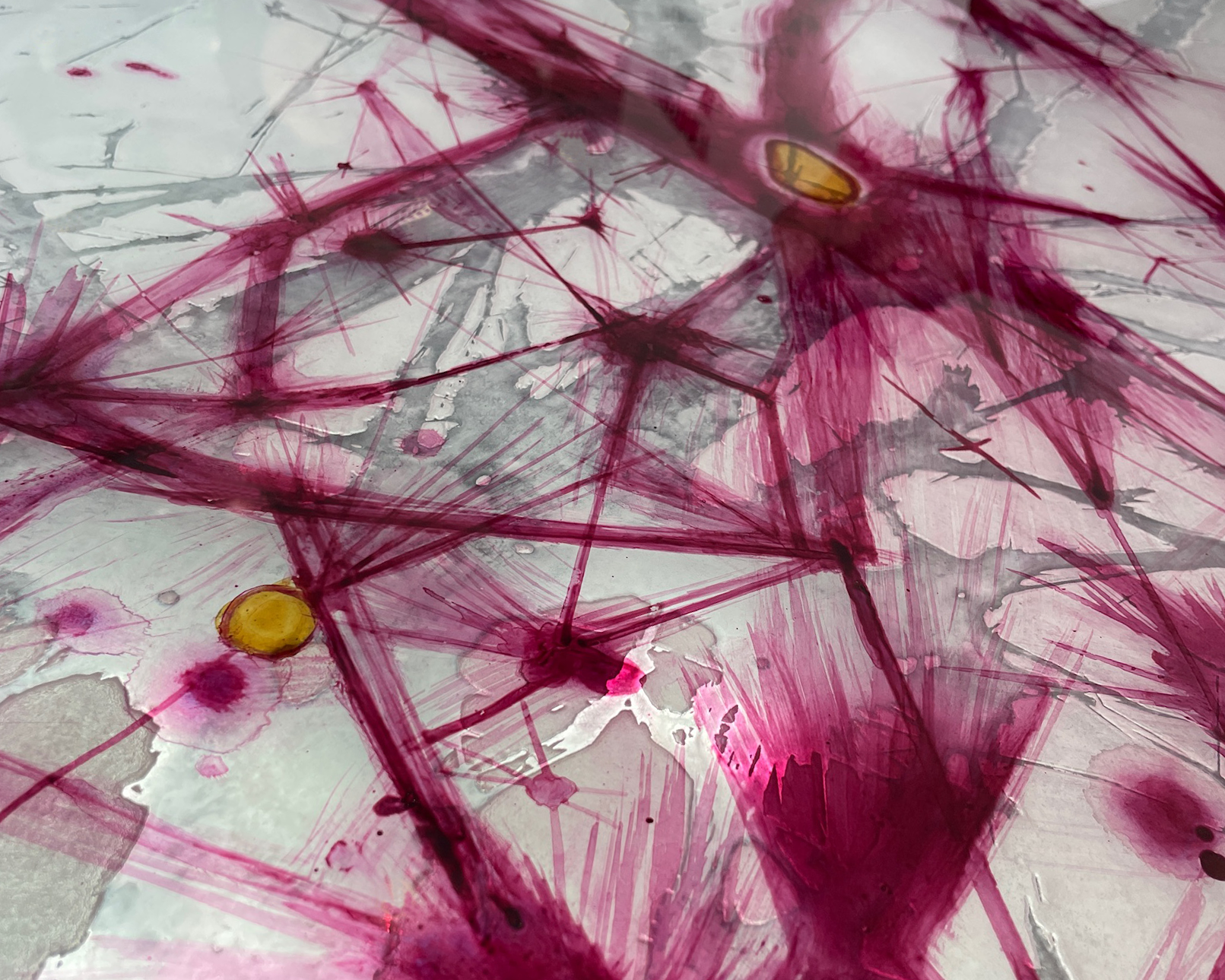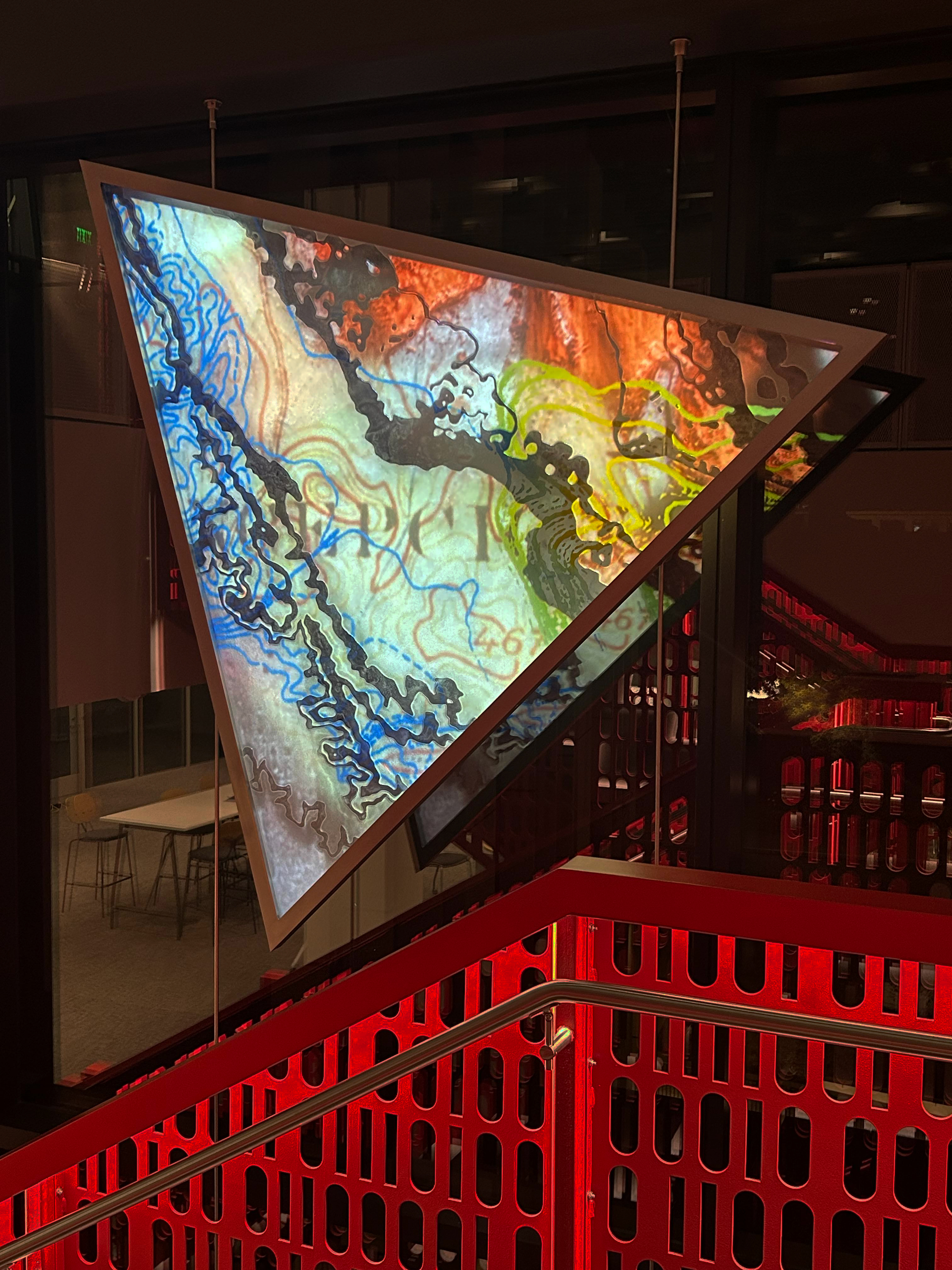Fathom is a five story tall, site-specific interactive installation commissioned for Stanford University’s new Computing and Data Science building (CoDa).
Fathom’s five custom triangular glass panels are illuminated by the sun during the day, and animated after dark with live computer-generated projections that respond to the presence and movement of people in the building. The artwork references human and material histories of representing, encoding, and interpreting data; and different types of meaning-making linked to these processes. The wide variety of imagery depicted on Fathom’s triangular glass panels and projections was developed by Utterback in collaboration with the Stanford research community. Sources include the Stanford University Archaeology Collections, the David Rumsey Map Center, Green Library Special Collections, and Particle Astrophysics and Cosmology faculty.
The triangle is the essential geometric form in computer graphics, underpinning every 3D model and virtual world. Complex shapes and surfaces are described by breaking them into polygons, and triangles are the simplest polygon.
Triangle Themes:
Big Data & Models of the Universe
Mapping & Geospatial Information
2D Charts & Data Visualization Histories
Binary Mechanical Encoding
Ancient Fiber Record Keeping
Recording information is always an act of reduction — transforming what we observe into material forms we can work with. These forms have varied across time and cultures and include data recorded with fiber in Incan Khipu knots, mechanically encoded in Jacquard loom cards, printed as charts and maps, and most recently, represented and manipulated via digital visualizations. Fathom explores the connections between our physical bodies and data, and emphasizes how both are essential to understanding and interpreting the world.
A fathom is a unit of measurement roughly equal to the span of outstretched human arms – fingertip to fingertip. Historically, fathoms were marked with knots on a long rope. This line was dropped into a body of water to measure depths that humans could not easily access. Utterback’s installation reminds us that quantifying the world will always be an embodied process, and hints that despite our best efforts, the true depth and complexity of our reality may remain beyond our grasp.
Project Team:
Project Management, Design & Engineering Support: Carmen Aguilar y Wedge
Lead Creative Technologist: Charlotte McElwain
Creative Technologist – extra support: Mary Franck
Project & Programming Support: Yingke Wang
Glass Fabrication: Mayer of Munich
Frame Fabrication and Engineering: TriPyramid Designs
Installation: Atthowe Fine Art Services
Content Collaborators:
Saoirse Byrne, Cordage Specialist + Artist
Risa Wechsler, Professor of Particle Physics and Astrophysics
Kavli Institute for Particle Astrophysics and Cosmology (KIPAC)
David Rumsey Map Center
Stanford University Archaeology Collections
Stanford Special Collections
Stanford Geospatial Center, Research Data Services
News:
“Art installation illuminates the history of encoded data,” Stanford Report, April 28, 2025
“CoDa marks new era for computing and data science at Stanford,” Stanford Report, February 13, 2025
